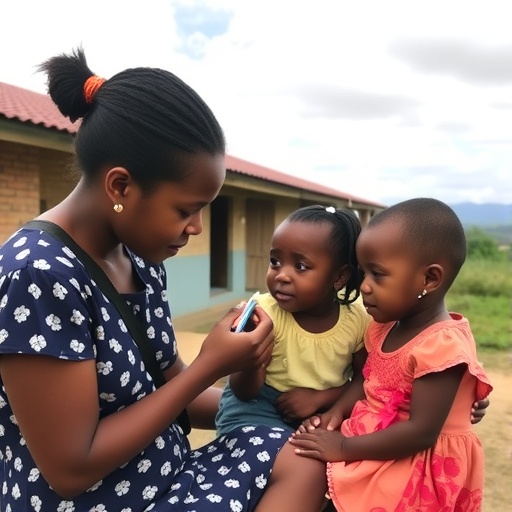Emerging Threats in European Healthcare: The Rapid Spread of Candidozyma auris Across Hospitals
A recent comprehensive survey conducted by the European Centre for Disease Prevention and Control (ECDC) has unveiled a troubling escalation in the prevalence of Candidozyma auris—formerly known as Candida auris—across hospitals throughout Europe. Representing the fourth iteration of such assessments, this report evidences a sharp increase in cases, signifying its evolution from an isolated pathogen to a pervasive menace within medical facilities. The rapid expansion of C. auris poses a formidable challenge to patient safety and healthcare infrastructure, demanding urgent attention to containment strategies and early intervention protocols.
Candidozyma auris is a multidrug-resistant fungal pathogen that primarily propagates within healthcare environments. Its capacity to colonize surfaces ranging from patient skin to hospital equipment attributes to its persistent transmission potential, particularly among critically ill patients. This fungus has garnered significant concern due to its resistance profile, which includes tolerance to many frontline antifungal agents, complicating therapeutic efforts. Since its first European detection in 2014, outbreaks have surged steadily, with over 4,000 cases reported across EU/EEA countries during the past decade.
The 2024 survey data reveal a staggering concentration of cases in five countries: Spain, Greece, Italy, Romania, and Germany. Collectively, these nations account for the bulk of infections registered between 2013 and 2023, with Spain alone reporting 1,807 cases. The year 2023 marked an unprecedented apex, as 1,346 cases emerged across 18 countries—a phenomenon indicative of escalating regional transmission. These findings underscore a shift from sporadic occurrences to entrenched endemicity, particularly in Greece, Italy, Romania, and Spain, where broad regional and national dissemination precludes clear outbreak delineation.
The virulence and resilience of C. auris arise from several biological characteristics that facilitate its survival and spread. Unlike many fungal pathogens, C. auris exhibits robust tenacity on abiotic surfaces, enabling it to persist for weeks on medical equipment, bed rails, and other fomites. This environmental persistence, coupled with its usual colonization of patients’ skin and mucosal surfaces, creates a continuous cycle of contamination and cross-transmission within healthcare units. The pathogen’s resistance to multiple antifungal drug classes further complicates infection control, as treatment options remain limited and often less effective.
Dr. Diamantis Plachouras, Head of ECDC’s Antimicrobial Resistance and Healthcare-Associated Infections Section, emphasizes the critical window for intervention: “C. auris has transitioned from isolated cases to widespread endemic presence within only a few years, illustrating its alarming transmission capacity. However, this trajectory is not inexorable. Timely detection and coordinated, robust infection prevention measures can still curb further spread.” His assertion spotlights the dual importance of vigilance and structured response frameworks in combating this growing threat.
Recent outbreaks in Cyprus, France, and Germany reveal diversification in the geospatial distribution of C. auris, indicating that no single nation remains untouched. The disparate progression across countries reflects varying degrees of preparedness and surveillance capabilities. While some healthcare systems demonstrate progress in containment, many others encounter significant obstacles, including fragmented surveillance infrastructure and insufficient infection control protocols tailored specifically to C. auris. Such disparities contribute to inconsistent reporting and hinder cohesive transnational containment strategies.
A critical gap identified by the ECDC survey relates to surveillance and diagnostic capacities. Only 17 of 36 participating countries possess a national surveillance system dedicated to C. auris, a shortfall that weakens the ability to monitor trends and promptly identify emerging outbreaks. Moreover, a mere 15 countries have instituted specialized national guidelines for infection prevention and control explicitly addressing this pathogen. This deficiency emphasizes the urgent need to standardize and enhance national protocols, improving response time and containment efficacy.
Laboratory infrastructure appears relatively stronger, with 29 countries reporting access to mycology reference or expert laboratories capable of definitive C. auris identification. Approximately 23 countries offer reference testing services to healthcare institutions, which is vital for accurate diagnosis and resistance profiling. Nonetheless, the absence of mandatory reporting in many jurisdictions likely contributes to underestimation of the pathogen’s true prevalence, obfuscating the threat magnitude and impeding informed public health responses.
The rising tide of C. auris infections within European hospitals reflects broader challenges inherent to healthcare-associated infections caused by multidrug-resistant organisms. The intricate interaction between microbial adaptation, antimicrobial pressure, and healthcare operational dynamics demands comprehensive, multidisciplinary approaches. Investing in advanced molecular diagnostic methods, real-time surveillance platforms, and enhanced infection prevention capabilities stands central to mitigating this escalating crisis.
The ECDC’s sustained commitment to monitoring C. auris includes periodic surveys and rapid risk assessments intended to furnish member states with actionable guidance on control strategies. These efforts emphasize the implementation of coordinated infection control procedures, such as rigorous environmental cleaning, contact precautions, patient cohorting, and antifungal stewardship. Heightened awareness and dedicated resources at institutional and governmental levels remain paramount to preventing C. auris from further compromising patient outcomes and health system resilience.
Looking forward, bridging the gaps in surveillance and control measures will necessitate collaborative international efforts, standardized data sharing protocols, and investment in research addressing the pathogen’s epidemiology and resistance mechanisms. The dynamic nature of C. auris transmission, coupled with its formidable resilience and adaptive potential, marks it as a critical priority for infectious disease control within Europe’s evolving healthcare landscape.
Without intensified and harmonized responses, the consequences of unchecked C. auris dissemination could parallel or even exceed those observed with bacterial multidrug-resistant organisms, posing not only clinical challenges but also significant economic burdens. As the pathogen continues to exploit weaknesses in infection control, healthcare institutions must reinforce preparedness frameworks and prioritize early detection to interrupt transmission chains.
In conclusion, the ECDC’s latest findings depict a pathogen rapidly converting from a rare curiosity to a widespread healthcare hazard. The emergence of Candidozyma auris as a persistent and multifaceted threat underscores the imperative to integrate fungal pathogen surveillance into broader antimicrobial resistance mitigation strategies. Only through comprehensive, evidence-driven action can Europe hope to stem the tide of this formidable fungal adversary.
Subject of Research: Spread and epidemiology of Candidozyma auris in European healthcare settings
Article Title: The Emerging Epidemic of Candidozyma auris: Europe’s Growing Hospital Challenge
News Publication Date: 2024
Web References:
European Centre for Disease Prevention and Control (ECDC) survey reports (2024) – ecdc.europa.eu
Keywords: Fungal infections, Candidozyma auris, healthcare-associated infections, antifungal resistance, epidemiology, Europe, hospital outbreaks, infection prevention
Tags: antifungal resistance in fungiCandidozyma auris outbreak in Europecontainment strategies for C. auriscritical care patient risksdrug-resistant fungal infectionsECDC report on C. aurisemerging infectious diseases in EuropeEuropean healthcare challengeshealthcare infrastructure vulnerabilitieshospital infection control measuresmultidrug-resistant pathogenspatient safety concerns in hospitals





